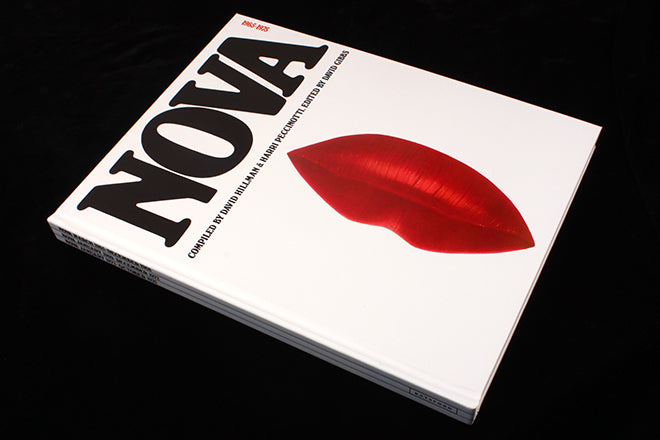
Nova, 1965-1975
First published in 1993 and much sought-after since going out of print, this history of the goundbreaking British magazine Nova has just been republished.
Compiled by former art directors David Hillman and Harri Peccinotti, the large format book is a template for any book about magazine design. It doesn’t make ridiculous claims for its subject, opting instead to let the work speak for itself.
It opens with a chronological run of front covers, an extraordinary set of designs that alone set the story of the magazine in context.
The reader immediately gets a feel for the magazine’s complex mix of first wave feminism, sexual liberation and new fashion.
Headlines ask direct questions, make bold promises, and use direct quotes challenging the status quo; ‘The truth about prude power’ (above) turns the tables on those that would censor the magazine’s open-minded 1960’s outlook.
The design and art direction retain a contemporary edge even 50 years later, the bright primary colours and simple typography matching the brilliantly directed photography. Later in the book, spreads from inside the magazines stand up as well as the covers do, their bold black and white typography alongside vivid imagery remains influential today.
The book proceeds chronologically, each year opening with a news/culture briefing that not only adds historical context but subtley positions Nova as a central part of British life. There’s also a nice intro section highlighting the influences of other magazines: from the US, Henry Wolf’s Esquire and Herb Lubalin’s Eros take their place alongsidesit alongside British titles like Tom Wolsey’s Town and Peter Maxwell’s Queen. Plus of course Twen, the extraordinary German magazine first art directed by Willy Fleckhaus earlier in the sixties.
Layouts are presented with little detail, they generally speak for themselves, but occasional anecdotes jump out. The above spread was part of an August 1966 story shot by Peccinotti, 12 pages of fashion using black models. He left for holiday only to return and find the story cut by six pages in favour of one with white models. A reminder of the internal politicking of any magazine, even one so celebrated for its enlightened outlook.
On a similar note, it has to be acknowledged that there’s something very sixties about the fact the era’s most exciting women’s magazine is celebrated here by primary members of a male-dominated team. Today’s prominent, forward-thinking, women’s magazines (I’m thinking The Gentlewoman and Riposte) could only ever be led by women (On that note, the role of Caroline Baker – who rose from receptionist to become Nova’s legendary fashion editor – deserves broader attention).
Nevertheless, few magazines exert so much influence this far on. Nova’s combination of strongly defined political will and stunningly matched visual direction are a rare example of optimal editorial creativity, content and design in precise harmony.
The book’s distinctive red lips cover design is a fixture in many magazine studios; this new edition will surely find its way onto a new generation of designer’s shelves.









